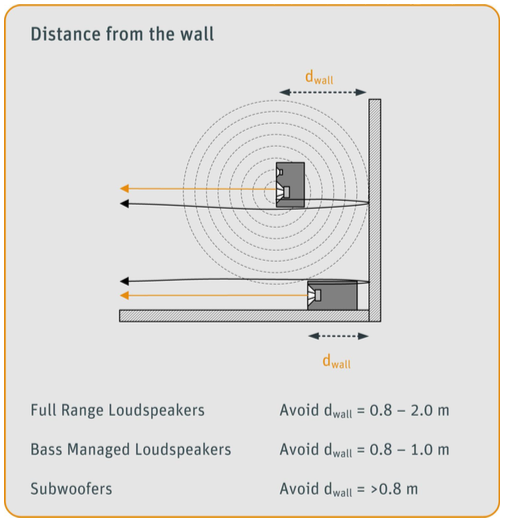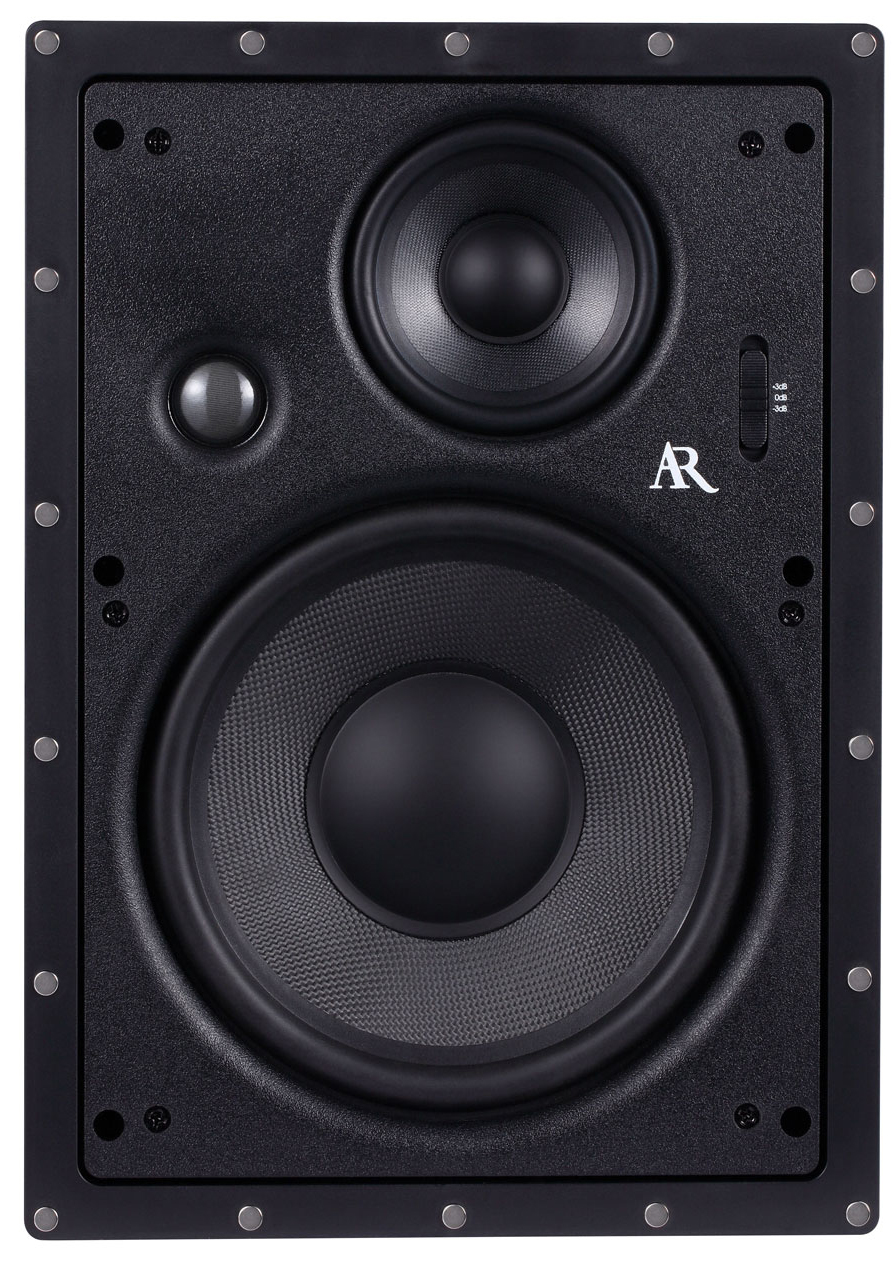We also deal with boundary effects or boundary loading which is the proximity of the speaker to the floor the back wall the ceiling and side walls.
Floor standing speakers distance from wall.
Turn the speakers so the the sounds reach behind your ears.
If d fwall is the distance to the wall behind your speaker you can calculate the quarter wavelength cancellation frequency using this formula.
F c c 4d fwall where f c is the center frequency of the cancellation notch and c is the speed of sound at sea level in dry air at room temperature the speed of sound is 343 m s or 1125 f s.
At low frequencies the performance is determined by the overall dimensions of the room.
Get away from the wall.
Position yourself nearer the speakers not 60 60 60 but 90 45 45.
Position the speakers so that the distance between the front wall is 1 3 to 1 5 the length of the room.
So a shallow triangle.
This listening position equidistant from the speakers and slightly farther from each speaker than the speakers are from each other is called the sweet spot.
The stereo sound appear virtually more separated and spacious.
With the speakers in this position listen to a relatively detailed familiar 30 second part of a track the more familiar you are with it the better.
Height width and depth.
The speakers and listener should form a triangle.
Firstly place your speakers right up against the wall flat out not toed in and the appropriate distance apart usually 1 5 2 5m depending on relative listening position and aesthetics.
There s a zone between 1m and 2 2m that ideally you want to avoid.
If you really do have a huge room to work with pull the speakers away from the wall.
And oh look that just happens to be the minimum distance to the wall recommended by genelec for their back ported speakers what a coincidence.
This influences something called standing waves.
Doing this will ensure that your speaker is working as it was designed and not emphasizing bass frequencies from being found in proximity to a wall.
Keep the speakers on the floor little away from the wall.
Any back ported speaker with a port diameter of 2 for example will work just fine placed up to a wall as long as there is 2 of space behind the port.
I sit 7 away from the plane of the single driver speakers with a bit over 9 between speakers.
Doing so will prevent the speakers from creating standing waves and exciting room resonances the peak and valley null nodes when reflected frequency responses are in or out of phase with each other.
But how far you might want to sit from any particular speaker will depend on the speaker.















/Floor-Speakers-vs-bookcase-speakers-ccab1ef151644fb182728052ef279327.jpg)












